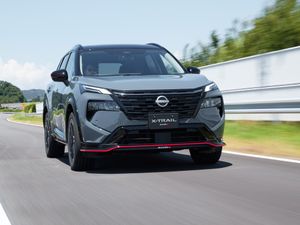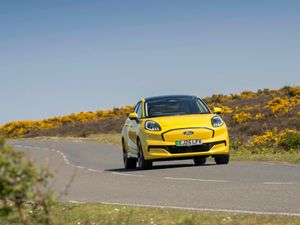Surfing adventures in an electric car: Does charging infrastructure get in the way of the waves?
Driving to Cornwall is something thousands of holidaymakers do each year, but is it getting easier for EV drivers? Jack Evans finds out.
Thousands of families head to Cornwall each year for a dose of sea, surf and – sometimes – sun. Taking well-trodden routes such as the A30 and A38, there’s usually a mad scramble to head down to the coast and recently, I wanted to see how that could feel with an electric car.
There’s a lot of talk about electric vehicles of late, of course. The Government recently introduced a new wave of grants to help incentivise EVs and, in the most recent Society of Motor Manufacturers and Traders (SMMT) data, one in four cars registered during June was electric. While fleet purchasers continue to dominate the uptake of EVs, falling prices and rising demand mean that more private owners are looking to make the switch.
But for many, infrastructure remains a key stumbling block. According to leading charger mapping site Zap-Map, there are now just over 82,000 chargers in the UK, with 1,371 added to the system in June alone. Despite this increase, rural areas continue to struggle with ‘blackspots’ without chargers and, for many drivers, it’s long journeys – like the one that many people undertake to get to Cornwall – which is a cause for concern when it comes to topping up.

Take a look at the spread of chargers across the county and while things have improved considerably over the years, there are still some large gaps. They’re mainly focused on the primary arteries south and it’s here that you’ll find most of the rapid units – those which can deliver quicker rates of charge and are your best bet if you’re only stopping for a short period – whereas the bulk of those spread throughout Cornwall are slower, 7kW units. These are a better option if you’re sticking around for a while, such as overnight.
However, the increasing range of electric cars means that people can travel further afield than before without the need to charge. Take the Polestar 4 I’m driving across on this Cornwall adventure. It’s got a range of up to 367 miles from a single charge of its massive 100kWh battery, which, given my 219-mile journey, leaves some headroom. I’ve been driving electric cars for a little while now, but even today I still like to allow some extra range on top of your journey’s distance to account for any changes in route, or even a change in speed. In the same vein as claimed fuel efficiency, EVs struggle to achieve their claimed full range.

Though as I saunter towards Cornwall across the south coast on a sunny summer morning, it appears that the Polestar isn’t lying. I’m not doing this as an economy mission, either; I’ve still got elements such as the air conditioning running, I’m maintaining a steady speed wherever I can (onwards west from Southampton is notoriously congested) and I’ve got my phone on charge in the middle of the car.
In truth, the route helps too. After leaving the M27, it’s largely single country roads with the odd smattering of dual-carriageways and these do help to maximise an electric car’s efficiency. Staying on the motorway for long periods of time is never the best way to maintain range, so this kind of route is ideal.
It’s a short four-and-a-half-hour hop to Mawgan Porth, where I’m aiming to tackle some waves with surfing champion Lucy Campbell. Fortunately, I arrive at the Scarlet Hotel with over 100 miles of range remaining, which is quite impressive given the overall distance. It also means that the Polestar’s readout wasn’t lying to me. It was also a relief to see that just 18 minutes away was a high-speed charger capable of delivering 150kW to the Polestar’s batteries. In fact, the Polestar team took the car away and within an hour, it was back up to 90 per cent, indicating more than enough range to get me home again the following morning.

Into the sea, and it’s clear why so many people head to Cornwall in search of surf. While the waves might not be the biggest, it’s the perfect area to get back in the swing of things (I surfed a long time ago but haven’t been on a board in a while). Thankfully, the Polestar 4 can be equipped with a surfboard rack should you want to, and many other electric vehicles are coming with these sorts of accessories to help more people take them on more adventures.

There’s a tour of the area around the Scarlet Hotel, too, and it’s clear how much sustainability is becoming a core part of what this part of the country is about. It even trickles down as far as surfing equipment, with local surf companies such as Finisterre highlighting the sustainability of wetsuits through eco-friendly materials such as Yulex, which uses natural rubber instead of more harmful neoprene, which isn’t biodegradable.
Though there’s still some investigation to be done into an electric car’s circular efficiency – and how much of an environmental cost they have in terms of core materials and recyclability – on a basic level, they do help to improve local air quality and, when run from sustainable electric, reduce the impact that a driver has on the world around them.

Slow chargers are also ideal for most of those who are travelling down to Cornwall for longer periods, since you can use them if you’re around for a little while. One look at the map highlights that these types of units are the most easily found, too.
But with a (nearly) full battery, I clamber back into the car the following morning to head home. Most drivers looking to make the switch into an EV should find the charging experience to be better than reported – it’s leagues ahead of where it was a few years ago – and while there are still stumbling blocks, there’s no reason why you can’t take your battery-powered car on longer journeys, Cornwall included.





